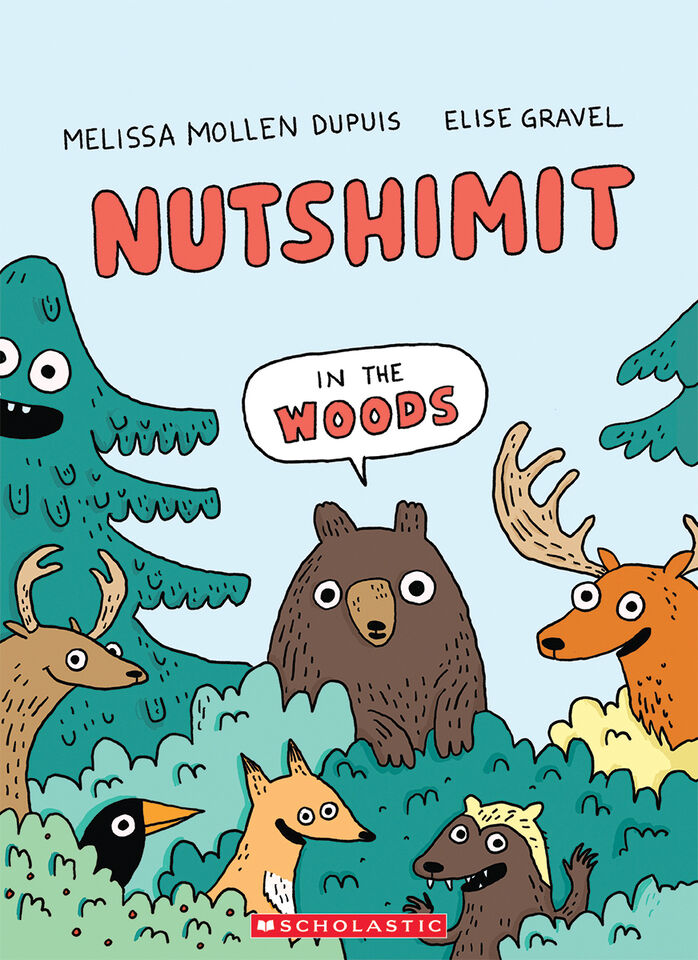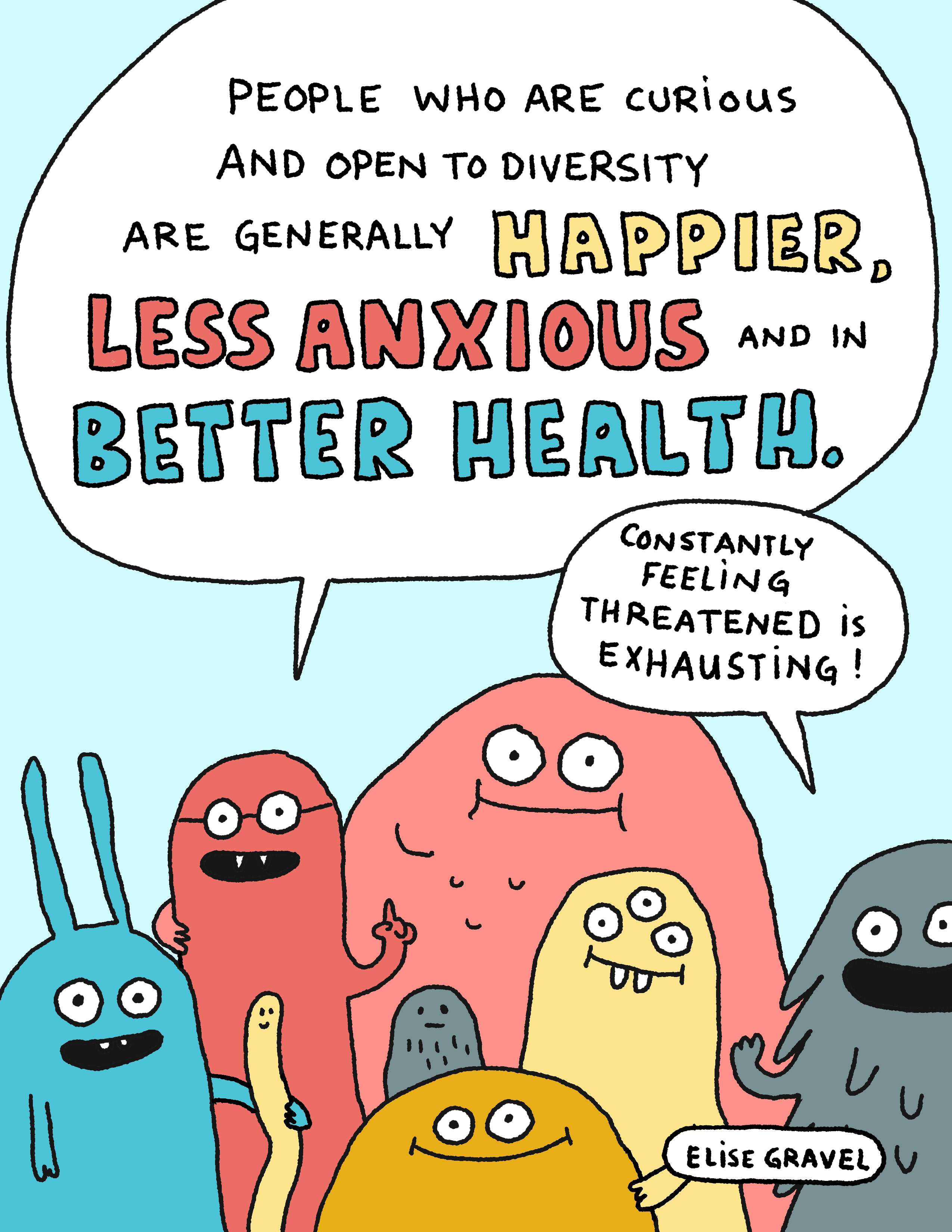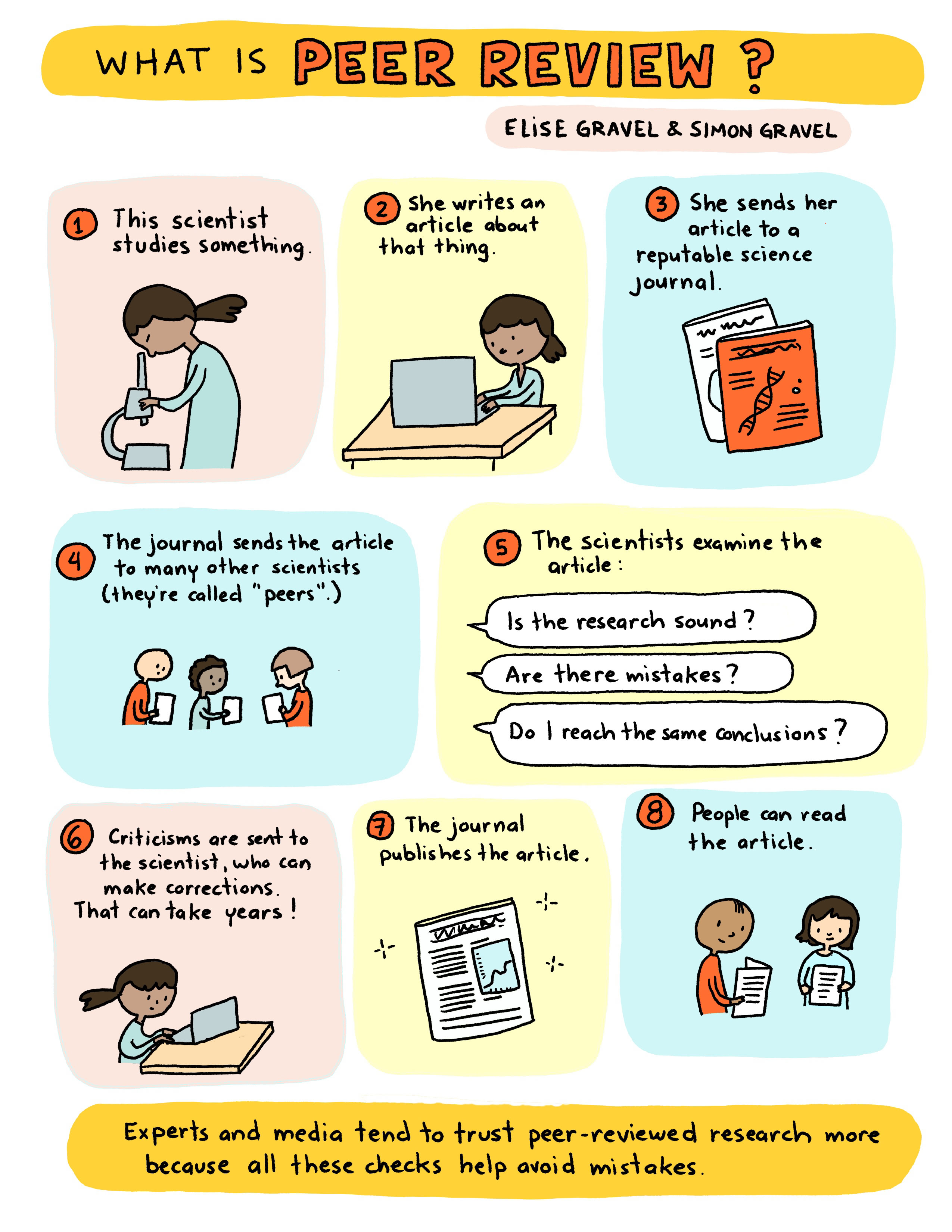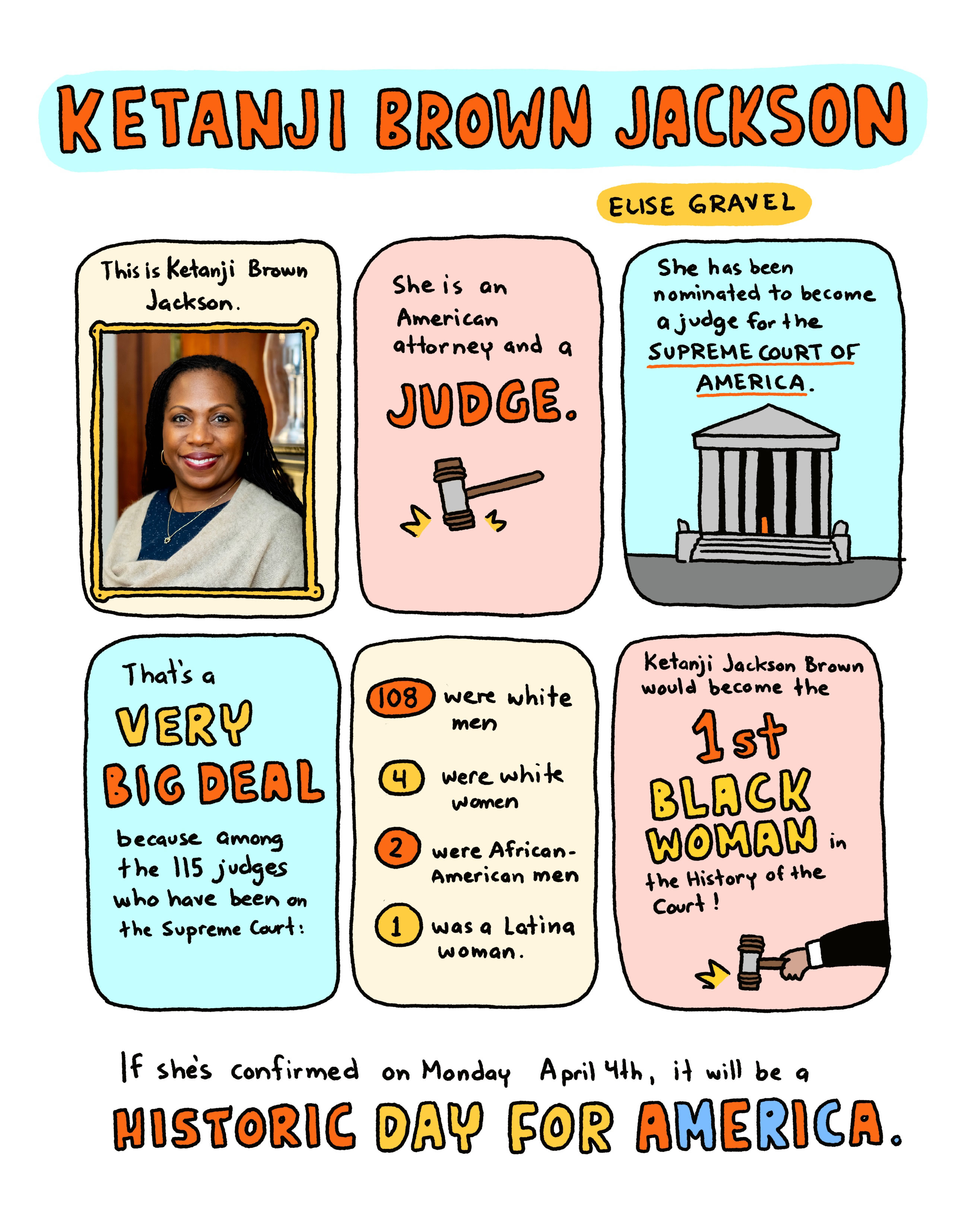How to raise a child who is mindful of social justice?

Introducing social justice to kids without overwhelming and depressing them can seem like a tricky task, but it’s crucial in today’s world. We want to nurture a sense of empathy and fairness without burdening young minds with heavy narratives. How can we teach social justice in a way that’s engaging and uplifting, focusing on positivity and empowerment? How can we motivate kids to make positive change? Here are some key strategies:
1- Foster Open Conversations
Have ongoing age-appropriate discussions about issues like racism, sexism, poverty, and other forms of discrimination and inequality. Ask questions to understand their perspectives, share your own views, and encourage critical thinking.
2- Expose Them to Diversity
Befriend people from diverse backgrounds and expose your children to different cultures through books, movies, museums, etc. This helps build empathy and appreciation for others.
3- Lead by Example
Model inclusive behavior, speak up against injustice, and get involved in causes that promote equality and human rights. Children learn powerfully from observing their parents’ actions.
4- Teach Advocacy Skills
Empower your kids to use their voices by brainstorming ways they can make a difference, like writing letters, creating art, or joining youth organizations that address social issues.
5- Highlight Diverse Role Models
Introduce your children to people of different genders, races, abilities, etc. who are making positive impacts. This expands their perspectives on who can be a leader and catalyst for change.
6- Address Biases and Stereotypes
Help your children recognize their own unconscious biases and societal stereotypes. Provide counter-narratives that challenge limiting beliefs about different groups.
By taking a proactive approach through open dialogue, diverse experiences, and empowerment, parents can nurture children’s awareness of inequity and inspire them to be forces for a more just world.
It’s My Body, a book for kids on body diversity
From Quill and Quire:
It’s My Body! is an exuberant, kid-friendly nonfiction picture-book primer on body positivity. Simple, direct sentences celebrate “ALL KINDS” of bodies and kick-start a convivial conversation about how to be your body’s best friend.
Governor General’s Award–winning author-illustrator Elise Gravel’s signature quirky characters are in fine form. The endearingly wacky, googly-eyed monsters who populate these pages have their own unique shapes, sizes, colours, and abilities. The gallery includes a long-legged critter who looks like a pink wad of bubble gum on stilts, a round blue rascal with a toothy grin, and a reddish tube-shaped imp waving hello.
Full of pep, the cartoon illustrations showcase monsters in motion. Some of the exercising, playing, and dancing creatures use assistive devices including glasses, hearing aids, and wheelchairs, and all enjoy the feats their bodies can perform. The relatable text acknowledges the delicate mind–body connection: “Sometimes we feel good in our bodies, and sometimes we don’t.” Monsters have self-doubts too; one laments, “Are my horns too pointy?” while another confesses, “I like my eyes, but not my nose!” Combining laughs with thoughtful lessons, this robust resource also offers tips on how to treat your body with kindness and keep it “HEALTHY AND HAPPY.”

Not only is Gravel a marvellous monster maven, she is an indisputable children’s champion (honoured in 2019 with the Rights and Freedoms Award from the Quebec Commission des droits de la personne et des droits de la jeunesse). Affirmations like “Your body belongs to YOU and only you!” lead to a discussion of boundaries. Gravel is adept at breaking down big concepts into easily understood core truths: “Nobody should touch your body in ways that you don’t like. Other people have these rights too. You shouldn’t touch their bodies without asking first.” Sample social scenarios play out in the comic panels, making sense of consent and teaching kids that it is perfectly fine to choose high-fives over hugs when preferred.
With monster-sized aplomb and panache, Gravel delivers a message that can’t be heard enough: every body is worthy of love and respect.
Nutshimit: In The Woods, with Melissa Mollen Dupuis
In this immersive first-person account, Innu author Melissa Mollen Dupuis teams up with award-winning author and illustrator Elise Gravel to take readers on a journey through Innu culture, from creation legends to life today.
The Innu word Nutshimit signifies the physical and social space to practice traditional activities and language. Join author Melissa Mollen Dupuis on a guided walk deep through the forest to learn some of the rich culture of the Innu people.
Readers will discover the importance of natural world and learn a few Innu words along the way. Thoughtfully brought to life by Elise Gravel’s signature comic style illustrations, Melissa’s colloquial narrative and anecdotes detailing her lived experiences offer a deeply personal look at Innu life. (From North Winds Press)
In this immersive first-person account, Innu author Melissa Mollen Dupuis teams up with award-winning author and illustrator Elise Gravel to take readers on a journey through Innu culture, from creation legends to life today.
The Innu word Nutshimit signifies the physical and social space to practice traditional activities and language. Join author Melissa Mollen Dupuis on a guided walk deep through the forest to learn some of the rich culture of the Innu people.
Readers will discover the importance of natural world and learn a few Innu words along the way. Thoughtfully brought to life by Elise Gravel’s signature comic style illustrations, Melissa’s colloquial narrative and anecdotes detailing her lived experiences offer a deeply personal look at Innu life. (From Scholastic)
My new book: Club Microbes
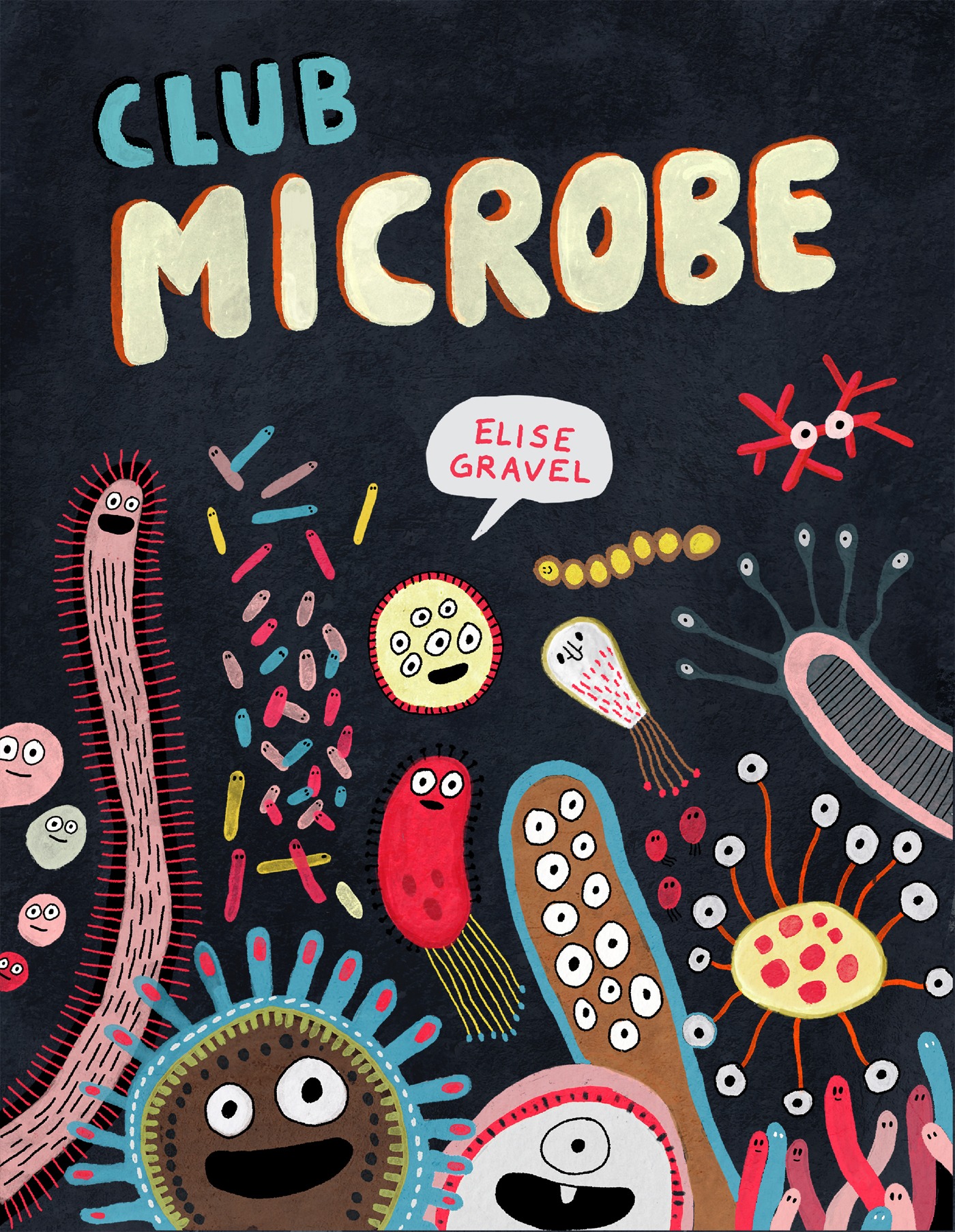
Here’s a review from SLJ:
Club Microbe
By Elise Gravel
Drawn & Quarterly, $17.95
Throughout her career, prolific cartoonist, author and artist Elise Gravel has been fascinated with weird little guys, as seen in her 10-book “Disgusting Critters” series and her 2021 The Bug Club. For her latest work, Gravel looks at the weirdest, littlest guys of all: Microbes.
Club Microbe, a companion of sorts to The Mushroom Fan Club and the aforementioned Bug Club, finds Gravel once again sharing her fascination with a swath of strange living things with her audience of young readers, her easygoing narration, cute drawings and silly jokes belying that it’s actually educational.
“I’ve been waiting forever to write a book on microbes (or germs),” Gravel writes on the opening two-page spread, where we see her cartoon avatar filling the pages with colorful microbes while her dog looks on. “They’re so fun to DRAW.”
From there, she defines what a microbe is, introduces the various families of microbes, and starts unspooling various facts about them. These include how omnipresent they are, how some are bad for us and some are good for us, and their many functions.
Gravel selects some for special highlighting, based on how cool-looking they are or how useful or unusual some form of behavior of theirs may be. In one section, she muses on their cool-sounding names, and in another she lists the ways she lives in harmony with her microscopic neighbors.
On the end pages there are quite beautiful, photorealistic images of microbes, but those throughout the book are drawn in Gravel’s signature style, achieved mostly by taking scientifically accurate drawings of various microbes and adding googly eyes to them.
“Microbes are living beings, but they aren’t animals, plants or insects,” Gravel writes near the beginning. “They don’t have legs, brains, mouths, or eyes. (Except in my drawings.)”
Two large microbes fill the page, both staring out at the reader with wide eyes and talking out of little mouths. “Elise puts eyes on everything!” the first says, while the other, a cycloptic germ with buck teeth, adds, “And little teeth!”
Here then it’s easy to see the resemblance to the stars of her previous “Club” books, which had the very same look in their eyes and pleasant little smiles. Mostly her microbes just stare widely and blankly, their thoughts impenetrable to the reader (perhaps it’s their lack of brains?), though those with speaking parts have a bit more personality than, say, the spread introducing various forms of viruses (including the Coronavirus which has dominated so much of our lives these past few years) and the bacteria.
On the final pages, Gravel again draws herself, this time with her arms wrapped around a giant virus, kissing it on its cheek while it makes a yucked-out face, the pair standing in a crowd of giant-sized microbes.
I practice meditation
Here’s a free printable I made to explain to children how to meditate.
Teachers and parents, you can download it here and print it for school or home use (no commercial uses allowed).
For more free printable posters, visit my boutique in the “free printable stuff” section. To see my books, click here. If you want to license this image, contact my agent (Contact form above).

Open-minded people are happier
Here’s a free printable comic I made to let kids know that developing curiosity and empathy for people who don’t have the same life experience will probably make them fell better. People who are open and curious about diversity are generally happier, less anxious and healthier, because constantly feeling threatened is exhausting!
To open your mind, you can:
• Talk to people who live different lives
• Read tons of books from diverse authors
• Don’t take your first impressions too seriously and always consider that you might be wrong
• Try to find things that you have in common with most people you meet.
Teachers and parents, you can download it here and print it for school or home use (no commercial uses allowed).
For more free printable posters, visit my boutique in the “free printable stuff” section. To see my books, click here. If you want to license this image, contact my agent (Contact form above).
Anger can hide other emotions
Here’s a free printable I made to explain to children that often, anger is there to protect other vulnerable or difficult feelings and emotions, such as fear, sadness, frustration, pain, or shame. Anger is a valid and important emotion, but it often protects
Teachers and parents, you can download it here and print it for school or home use (no commercial uses allowed).
For more free printable posters, visit my boutique in the “free printable stuff” section. To see my books, click here. If you want to license this image, contact my agent (Contact form above).
Killer underwear invasion!
Here’s my latest book on disinformation, media literacy and conspiracy theories: Killer underwear invasion!
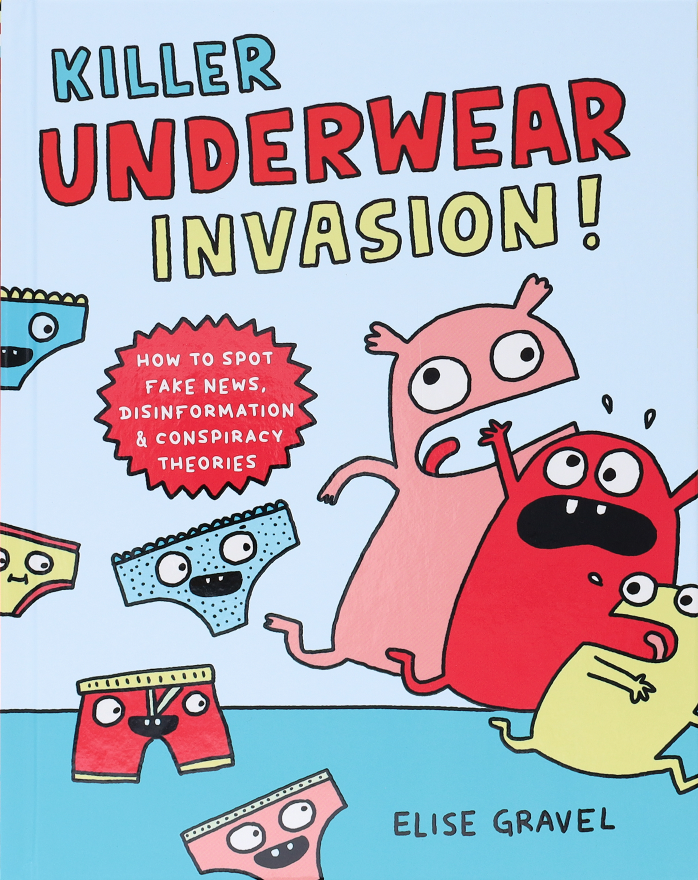
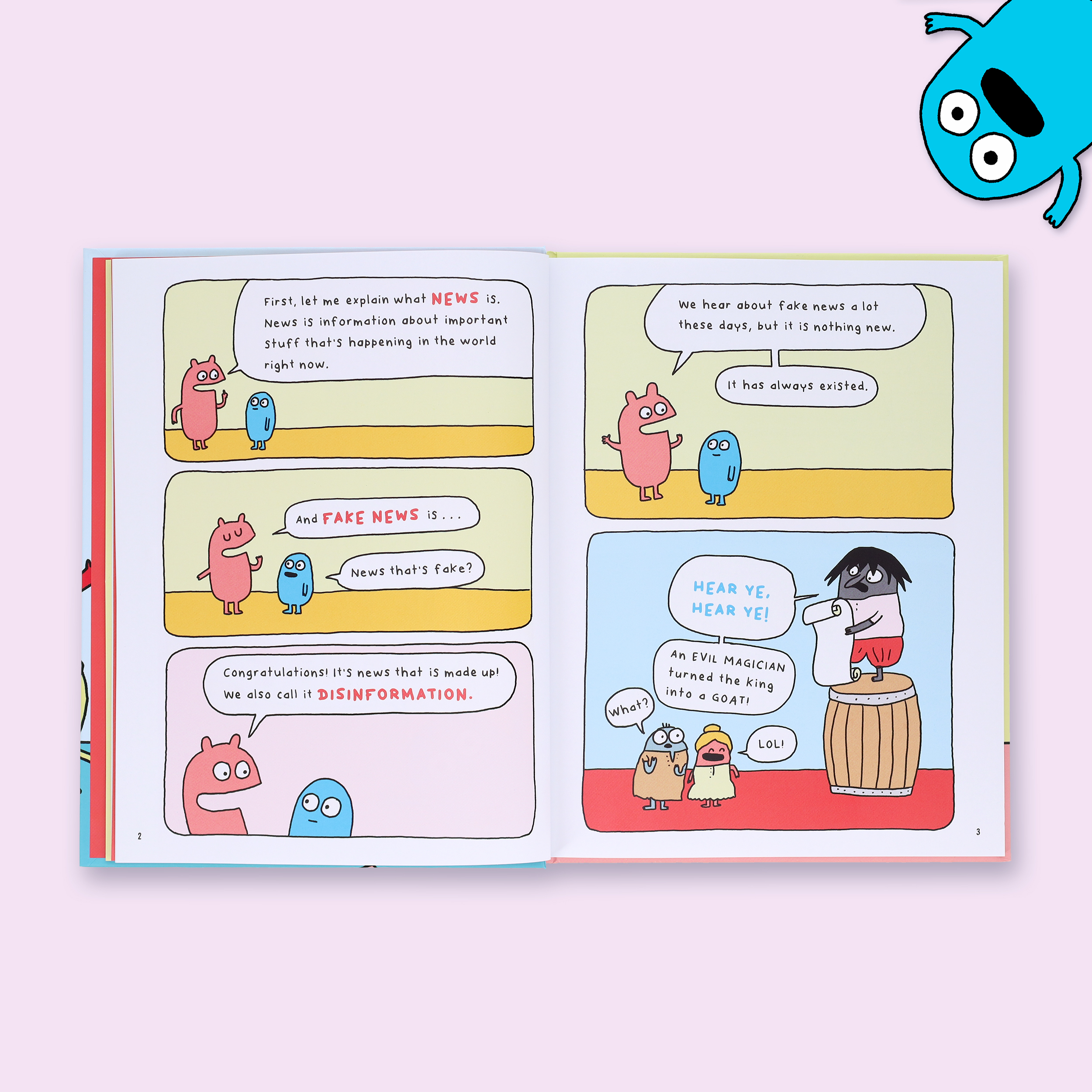
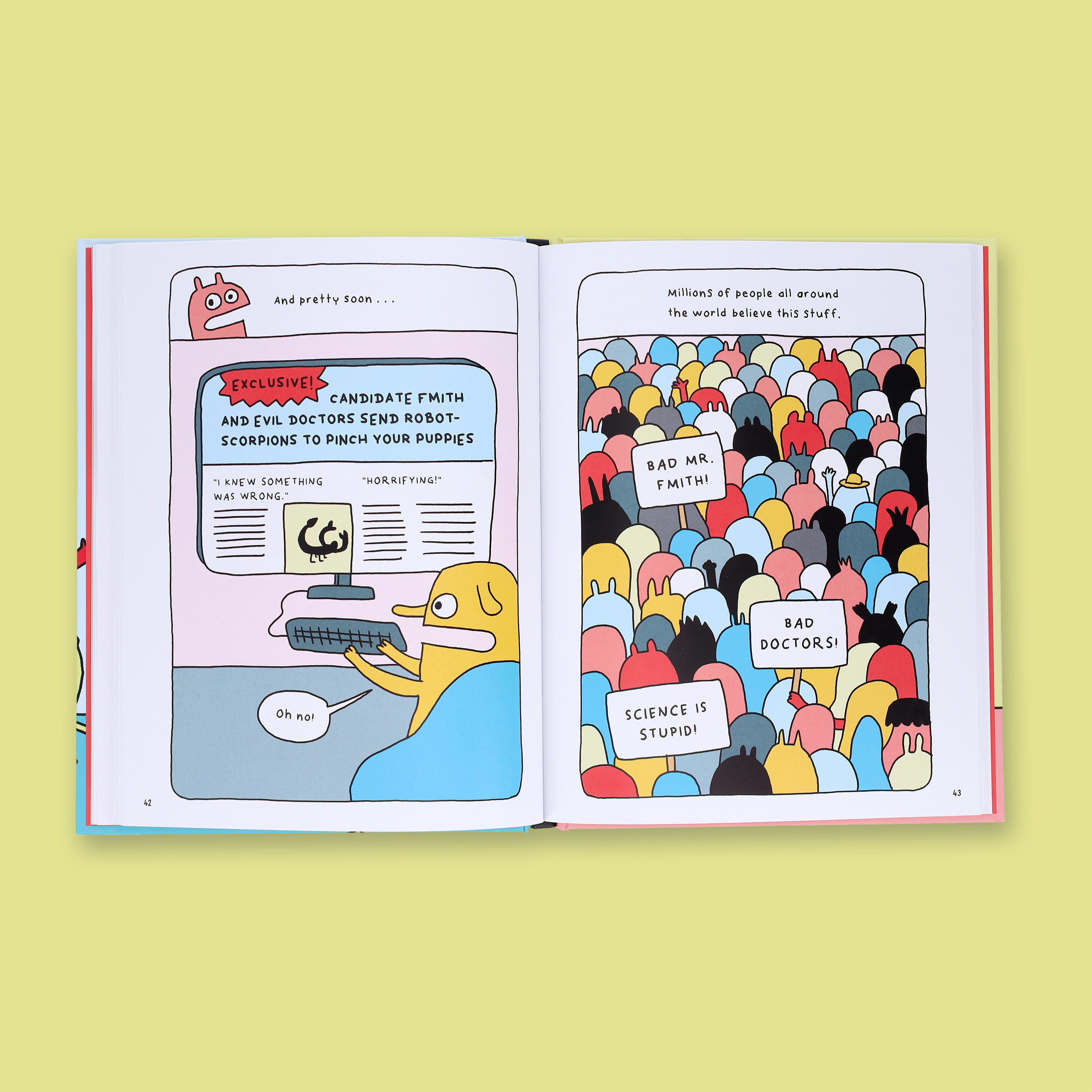
Two jellybean–shaped creatures, one blue, one pink, delve into the intricacies and duplicity behind one of the most insidious and pervasive issues of our time, and the first chapter of this middle-grade comic dives right in: “What Is Fake News?” Gravel does a fine job breaking down complex ideas, beginning with the definition of news (“information about important stuff that’s happening in the world right now”) and explaining that while disinformation is not new (“Hear ye, hear ye! An evil magician turned the king into a goat!”), the internet and other modern technologies have made it much easier to make lies look real and to intentionally spread them. The hows and whys are explored using specific, goofy fictional case studies; and people’s motives (e.g., “Reason 1: To make money…Reason 2: To make money and get famous,” etc.) are plainly laid out. Though the examples aren’t necessarily serious, the consequences are: “So far, I have given you a bunch of silly examples of fake news,” says the pink protagonist, “but fake news is not funny at all. It can actually be very dangerous.” The tone is non-blame-y of consumers (but not purveyors) of fake news, with acknowledgment of the ease of being duped (“Admit it—you’d be curious, too”) and useful advice about thinking critically, examining sources, etc. Well-delineated panel illustrations featuring blobby critters and pastel colors make these thorny concepts relatively easy to get and should leave many readers feeling empowered.- ELISSA GERSHOWITZ, Horn Book
***
This middle grade graphic nonfiction is an ingenious introduction to media literacy for kids. Using humor and super fun illustrations, author and illustrator Elise Gravel shows how kids can spot fake news and conspiracy theories. This is a must in today’s news cycle, where so much absolute nonsense is passed off as news. I used to teach introductory research and writing to college Freshmen, and if this book had existed then, I probably would’ve had them read it! At the same time, my 4-year-old enjoyed reading excerpts for the illustrations and silly jokes. It’s a really fantastic, accessible introduction that would work great in middle school classrooms. – Margaret Kingsbury, Book Riot
What is peer review?
Here’s a free printable I made to explain to young readers why some scientific studies are taken more seriously than others by experts and the media.
Teachers and parents, you can download it here and print it for school or home use (no commercial uses allowed).
For more free printable posters, visit my boutique in the “free printable stuff” section. To see my books, click here. If you want to license this image, contact my agent (Contact form above).
Who is Ketanji Brown Jackson?
Let’s introduce Ketanji Brown Jackson to our kids. If she’s confirmed on April 4th, she will become the first Black woman on the Supreme Court of America.
Teachers and parents, you can download it here and print it for school or home use (no commercial uses allowed).
For more free printable posters, visit my boutique in the “free printable stuff” section. To see my books, click here. If you want to license this image, contact my agent (Contact form above).


